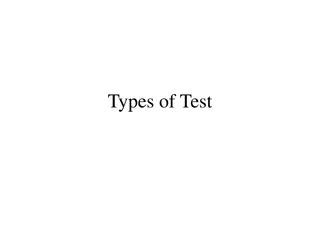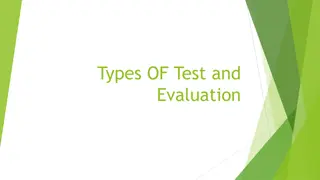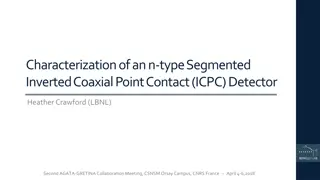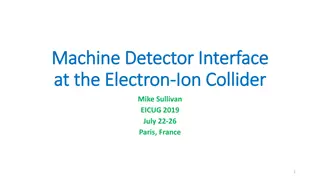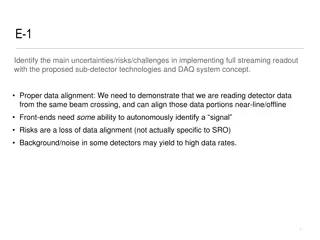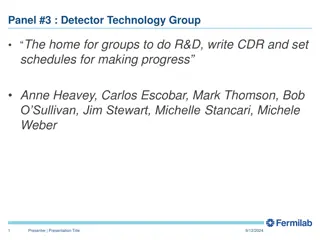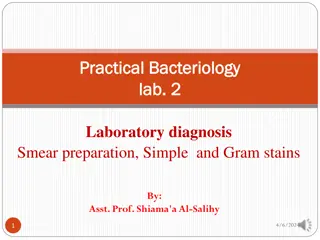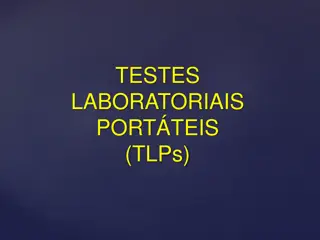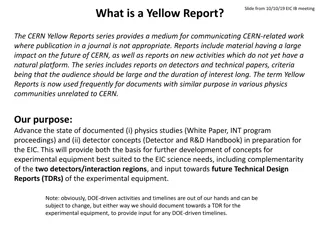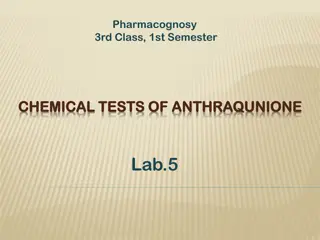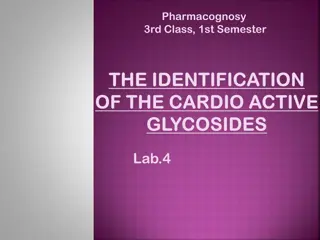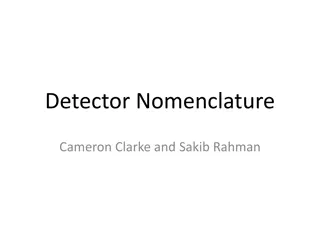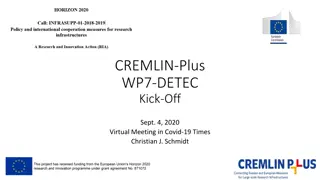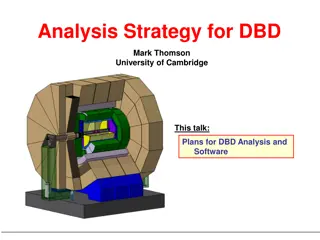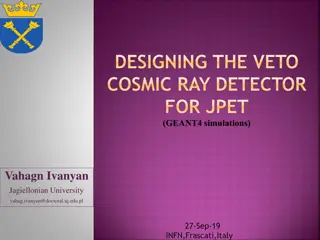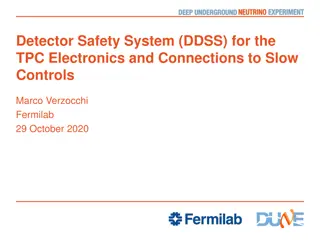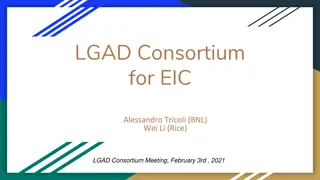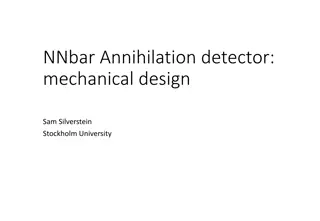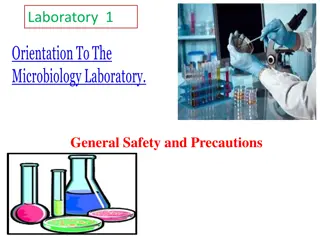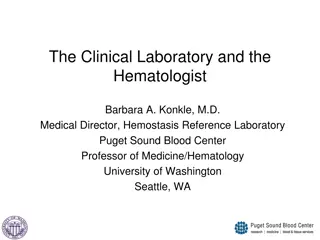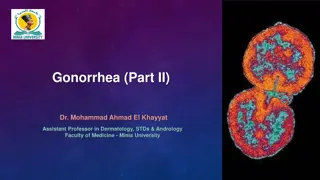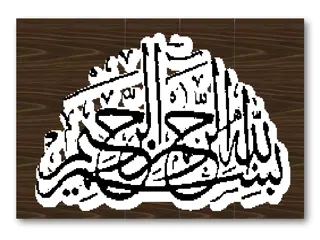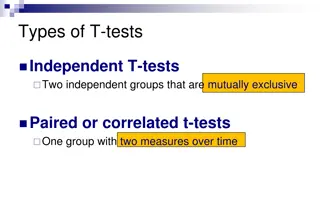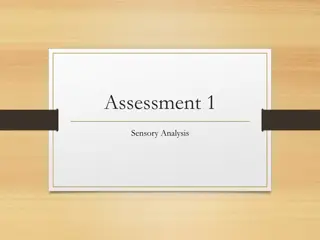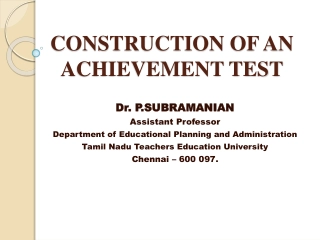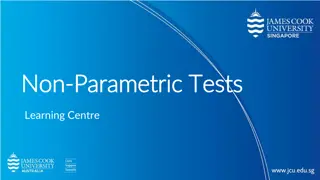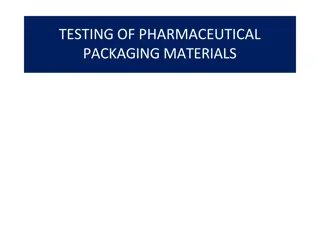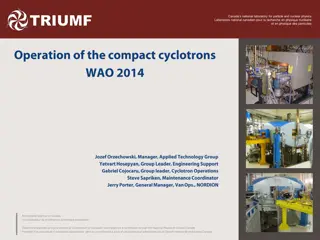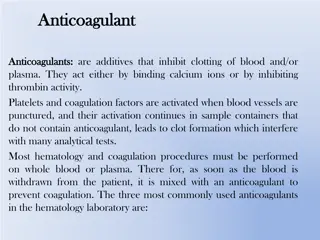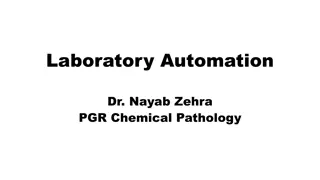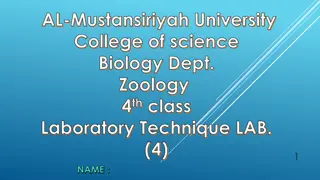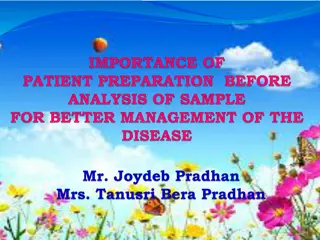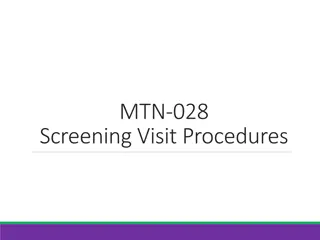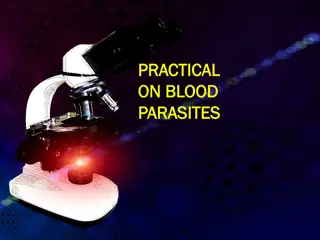Recent Tests of Heidelberg Microcalorimeter and New National Detector Laboratory Initiatives
Recent tests of the Heidelberg microcalorimeter at the ESR Andreas Fleischmann University of Heidelberg showcase advancements in X-ray photon research with metallic magnetic calorimeters. Additionally, a new initiative is discussed towards establishing a National Detector Laboratory by Thomas Stöhlker at Helmholtz Institute Jena, GSI, and Friedrich Schiller University. The studies involve ESR beams, micro-calorimeters, atomic physics tests, and precision x-ray spectroscopy. The use of advanced instrumentation and innovative approaches is highlighted in these cutting-edge research projects.
Download Presentation

Please find below an Image/Link to download the presentation.
The content on the website is provided AS IS for your information and personal use only. It may not be sold, licensed, or shared on other websites without obtaining consent from the author. Download presentation by click this link. If you encounter any issues during the download, it is possible that the publisher has removed the file from their server.
E N D
Presentation Transcript
Recent tests of the Heidelberg microcalorimeter at the ESR Andreas Fleischmann University of Heidelberg
New Initiative Towards a National Detector Laboratory Thomas St hlker Helmholtz Institute Jena, GSI, & Friedrich Schiller University, Jena
Univ. Heidelberg X-ray photon C. Enss, A. Fleischmann Absorber Au paramagnetic sensor Ag:Er Metallic Magnetic calorimeter photon heats absorber change of magnetization in paramagnetic sensor change of induced current measured by SQUID B SQUID Features (maXs-30) Thermal bath (T < 50 mK) number of pixels: 64 pixel absorber size: 0.5 x 0.5 mm2 energy range: 2 - 30 keV energy resolution: < 10 eV (e.g. Ge(Li) detector: 200 eV @ 6 keV) D. Hengstler et al. Phys. Scr. T166, 014054 (2015) 3
gas-jet target ESR beam micro-calorimeter Univ. Giessen 145 to beam micro-calorimeter Univ. Heidelberg 90 to beam 4
ESR beam time June/July 2016 Atomic Physics test of instrumentation GSI/Frankfurt Internal-Target Heidelberg/HI-Jena Micro-Cal GSI Kassel UV-XUV Schottky -calorimeter Giessen Micro-Cal
ESR beam time June/July 2016 Atomic Physics test of instrumentation Precision x-ray spectroscopy for test of bound state QED Metallic magnetic calorimeter maXs-30: First 2D array currently in use at the ESR (40 pixel) : June 2016 D. Hengstler et al. 6 09.06.2015
ESR beam time June/July 2016 X. Ma et al., PRA 012704 (2001)
screened self-energy screened vacuum-polarization electron-electron interaction by n virtual photons Y. S. Kozhedub et al. Phys. Rev. A 81, 042513 (2010) 8
Doppler shift: -> Uncertainties in projectile velocity and observation angle propagate into result! 9
Xe54+ =>Xe @ 50 keV (2014) T. Gassner et al., PhD Thesis 2016 10
Evaluation will take place Nov. 1st, 2016 11
KAPTURE: KArlsruhe Pulse Taking Ultra-Fast Readout Electronics Readout system compatible with: YBCO, HEB, and Schottky diode detectors Simultaneous acquisition of all buckets turn-by-turn in streaming mode Continuous acquisition for long observation time. Pulse amplitude and arrive time measurements with mv and psec accuracy KAPTURE system Real-time data elaboration by GPUs Spectrogram analysis (10 15 hours) Frequency behaviour of CSR @ different bunch current KAPTURE - Basic concept S3 CSR fluctuation (time domain) S2 S4 Sampling points With YBCO detector S1
Fabrication infrastructure at KIP Dry Mask writer Chemistry Wet bench Mask aligner UHV sputtering etching
Innovative Detektoren Forschungsbereich Materie Zentren: KIT (federf hrend), DESY, HI-Jena/GSI Sprecher: Prof. M. Weber (KIT, Topic-Sprecher DTS) PIs: Prof. H. Graafsma, Dr. C. Wunderer (DESY), Prof. Th. St hlker (HI-Jena/GSI, Direktor HI-J, Programmsprecher MML), C.J. Schmidt (HI-Jena/GSI, Leiter des Detektorlabors), Prof. J. Becker, Prof. M. Siegel, Prof. A.-S. M ller (KIT) Assoziierte Partner: Universit t Heidelberg, Kirchhoff-Institut f r Physik IPHT: Leibniz-Institut f r Photonische Technologien MPG-HLL: Halbleiterlabor der Max Planck Gesellschaft, M nchen PTB: Physikalisch-technische Bundesanstalt, Braunschweig und Berlin PIs der Partner: Prof. C. Enss (U. Heidelberg), Dr. D. Arnold (PTB), Dr. R. Scholz (IPHT), J. Ninkovic (MPG-HLL) SEITE 14
Zusammenfassung: Innovative Detektoren Optimierte Halbleiterdetektoren Massive Steigerung der Empfindlichkeit von CMOS-Sensoren Postprocessing : D nne Eintrittsfenster f r spezifische Experimente Tieftemperatursensoren Energie- und Zeitaufl sung um Gr enordnungen besser als Alternativen, z.B. Hightech-Infrastruktur & Systemkompetenz aufbauen! Von Einzelsensoren zu Vielpixelkameras und gro en, komplexen Detektorsystemen Energieaufl sung eV Zeitaufl sung Pikosekunden Bedarfe: Photonenspektroskopie, Experimente an Synchrotronquellen, Astrophysik, Teilchen- und Astroteilchenphysik, Materialanalyse, nukleare Forensik, Metrologie, Atom- und Quantenphysik, Zellstudien im Wasserfenster 1.6 eV -Kalorimeter f r R ntgenstrahlung 92 eV Einzelpuls- verteilung bei FLASH SEITE 15


